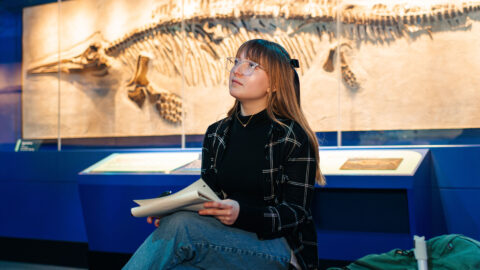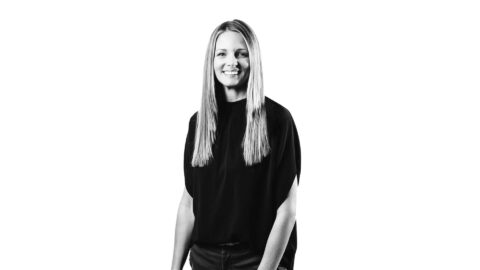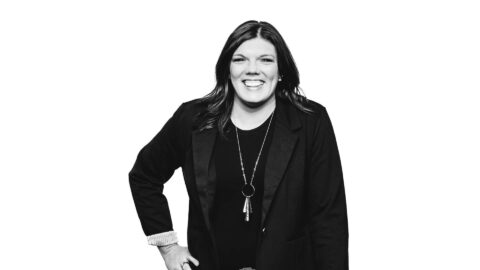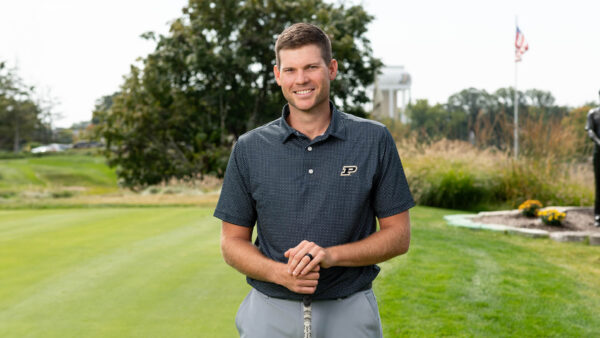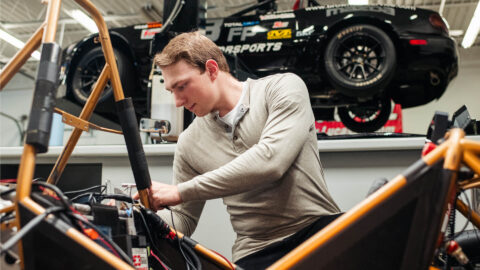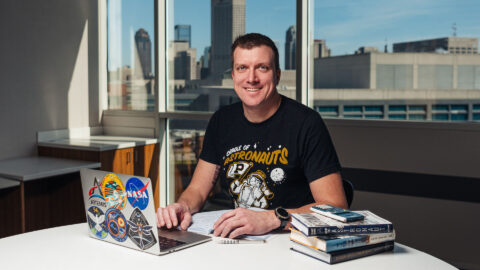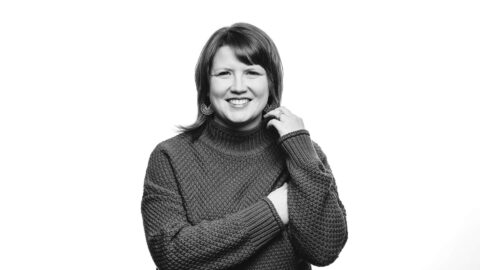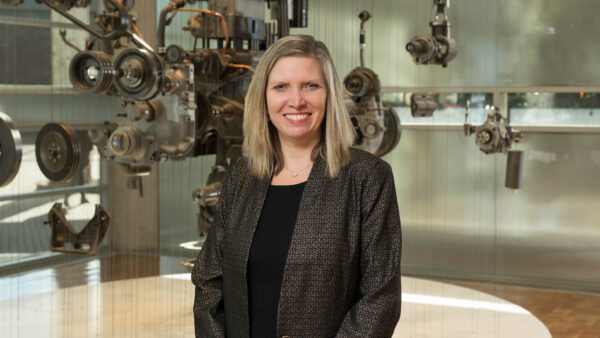Explaining the sound of Purdue’s ‘Clapping Circle’
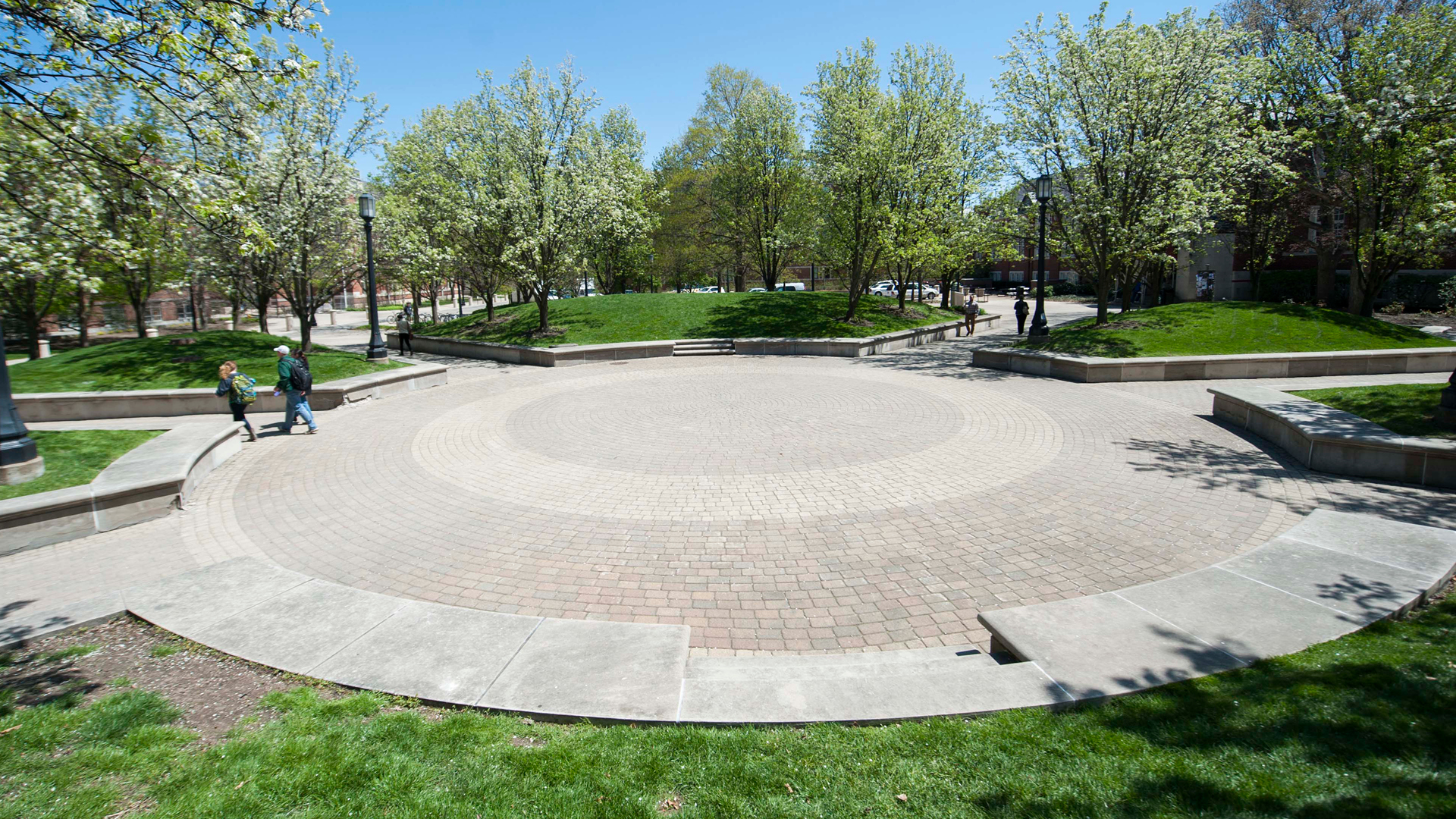
Student researchers proved acoustical engineering professor’s theory to be correct
Have you ever clapped your hands in Purdue’s most famous “Clapping Circle” and wondered what caused the resulting squeaky sound?
After extensive testing, members of Purdue’s chapter of the Acoustical Society of America determined what causes the audible sounds when someone claps while standing at this campus landmark in Academy Park — located between Heavilon Hall and the corridor that separates the Purdue Memorial Union from Stewart Center — and 10 other such circles on the West Lafayette campus. Equally impressive, the ASA members proved the related theory of a Purdue acoustical engineering professor.
“We’ve been aware of the clapping circle phenomena for many years and have always had this idea that it would be fun to do some measurements to find exactly what the effect is,” says J. Stuart Bolton, a mechanical engineering professor who specializes in acoustics and noise control.
Equally curious, ASA members decided in fall 2019 to launch a research project studying the circles, which are landscape architectures made of stones laid in concentric circles. The researchers secured funding through the Student Organization Grant Allocation Board.
“When we decided to pursue the clapping circle project, the deadline to apply for the grant was that same week, so this almost didn’t happen,” says former ASA president Elspeth Wing (BS multidisciplinary engineering ’20), who participated in the project as a senior focusing on acoustical engineering. “We quickly made our supply list and wrote the proposal, submitted it by the deadline, and we learned our proposal was awarded — all in short time.”
The team based its research on three widely known theories. According to Bolton, some people at Purdue had believed rounded benches positioned around the circles reflect the clapping noise. Others felt the reflections come from buildings in the surrounding areas.
Bolton had his own theory.
“Generally, when we look at the timing of the return of noise, the returns come back much sooner than they would if they had to travel to the bench or buildings and back,” he says.
Bolton’s theory focused on the speed of sound being about one foot per millisecond, with the clapping circle sounds returning in just a few milliseconds.
“It had to be coming from close by,” Bolton says. “So, my theory was that the sound was from the ground, hitting the grooves between the stone tiles and, therefore, the sound was scattering back toward the clapper.”
Students conducted preliminary tests to obtain baseline measurements without nearby buildings. The campus intramural fields served as this preliminary location, with a balloon impulse test rig used for measurement.
“A large field was chosen because it is quiet, empty and has absorptive grass beneath the test rig,” says Steven Herr (BS electrical engineering ’20), who also participated in the project as a senior.
The rig itself consisted of a 5-volt DC motor operated 100 feet away that spins a needle to pop a balloon. A nearby microphone measured the resulting sound.
The team then conducted research at various clapping circles using an impulse response procedure. To test the data, the team applied a mathematical model created by Tony Xue (PhD mechanical engineering ’19) for data visualization and interpretation.
“I had created an algorithm to help analyze the spectrogram for time, frequency and history of a sound recording during the first semester of my PhD,” Xue says. “I was helping with another project related to a laser printer. This algorithm happened to help with this clapping circle project.”
Xue found similarities between the two projects, as both required researchers to recognize the squeak/sound’s frequency characteristics.
“The very important characteristic of the squeaking is the pitch frequency,” he says. “We want to recognize its frequency and then use it to prove what we thought was correct.”
Students conducted the research on a Sunday night to reduce outside noise and interruptions. The team had already ruled out the building reflection theory because the reflections would return way after the squeak occurred with respect to the clap, relatively speaking.
They started with the largest architectural circle. The team then collected the impulse response data at the clapping circle nearest Wetherill Hall, which didn’t have benches on its perimeter, thereby testing the bench reflection theory.
At both spots, stone tiles and grooves were covered in a series of configurations. As more tiles were covered, the squeak faded and was confirmed through the comparison baseline model recorded at the open field.
As a result, students learned the squeak from the clap is caused by the sum of reflections from the grooves between the tiles.
“The results are based on the time it would take to travel to and from the grooves, the spectrograms of measurements that fit with the mathematical model based on Professor Bolton’s theory,” says Wing, who received the Leo Beranek Student Medal for Excellence in Noise Control Study for her work on the project. “We were able to rule out the benches because the circle without the benches still displayed the squeak.”
